*Authors: Shota Mgeladze and Shalva Chikhladze
Introduction
The May 4th movement in 1919 caused milestone changes in Chinese urban society. Intellectuals with new ideas, views, and political aspirations organised and created different groups and actively imported new ideas from western society and Russia. After the triumph of the Bolshevik revolution, Marxism started spreading among Chinese intellectuals, and they decided to establish the Chinese Communist Party in 1921. In the beginning, it was a tiny political organisation without political or military influence, but later on, communists’ number and their influence started growing.
On July 1, 2021, China celebrated the one-hundredth anniversary of the Chinese Communist Party (CCP). Nowadays, CCP is the biggest political organisation with dozen millions of members. During the one hundred years, the party experienced significant achievements as well as failures. Indeed, the image of CCP is controversial due to its past and present. For millions of Chinese, it is associated with triumph in a civil war, reforms, stability, and economic welfare, while at the same time, some parts of the Chinese and international society highlight CCP’s aggressive experiments and style of governance. Since 1921, CCP has faced many organisational, domestic, and foreign challenges. The Party’s strategy changed several times before and after the civil war. Besides triumph on nationalists, China was trapped in the Korean war under the leadership of the CCP. Later on, the Party started carrying out strange socio-political experiments: “great leap forwards,” “the hundred flowers campaign,” and “culture revolution,” etc. Modern Chinese society started rethinking these experiments, and even more, their view is critical at some point. Furthermore, Deng Xiaoping’s reforms remade the Chinese state. China, step by step, became the factory of the world and the biggest developing economy in the world. The country that once faced the lack of daily necessities and products became a supplier of diverse goods for the entire world.
Due to the above reasons, the paper nominates the biggest achievements made by CCP, and it also analyses several failures, which still harm the Party and society as well. We clarified achievements and failures from 1921 until now, which still have positive and negative impacts on China and global affairs.
Historical timeline of major events related to CCP –According to Xinhuanet editorial team (钱中兵, 2021) and Aljazeera (Chughtai, 2021):
– Establishment of CCP, 07.23. Shanghai
– Chinese communists joined to nationalist Party and participated in the northern expedition, 1924
– Nationalist Party’s conservative fraction expelled communists
– CCP declared the establishment of the Chinese Soviet republic, but Chiang Kai Shek hit back and oppressed them, 1931
– To save “the last communists,” Mao Zedong and Zhou Enlai led “the long march” towards the northern provinces, 1934-1935
– Alignment with KMT, a war against Japanese invaders 1936-1945
– The last phase of civil war, 1945-1949
– Establishment of PRC
– Took part in bloodshed conflict on Korean Peninsula, 1950-1953.
– Economic and political experiments “great leap forwards,” “hundred flowers campaign,” and the traumatic impact on society
– Ping-pong diplomacy and a new stage in the Sino-US relationship
– Deng Xiaoping started “reforms and opening-up,” 1978
– Tiananmen Square protest, 1989
– A big step towards reunification – Hong-kong and Macau rejoined PRC under the “one country two system” 1997-1998. “The New Era” under the leadership of Chairman Xi and China’s global initiatives
Roadmap
While we have emphasised the main events experienced by the Party since its foundation, the next part deals with the main achievements, subsequently followed by failures. The final part is dedicated to expectations for the nearest future, followed by a small conclusion.
The CCP‘s Achievements
Keeping distance from orthodox Marxism and bank on peasants
The early generation of Chinese Marxists was thrilled by the Bolshevik revolution in Russian Empire. At the same time, the ideological influence of the Soviet Communist Party and Comintern was quite significant on them. The first ideological dispute among old and young generations started during the northern expedition (1924-1927), where they realised that temporary absorption with the Chinese Nationalist Party (KMT) would not last long. Sun Yat-Sen, the founder of the Republic of China, passed away in 1925. That momentum became a turning point among the Chinese revolution and interest groups; they were mobilised to seized power for their future activities. Chinese nationalist Party was divided into three fractions:
1. Conservatives (led by Chiang Kai Shek)
2. Left wings (led by Wang Jingwei)
3. Radical Marxists (Chen Duxiu, later on, Zhou Enlai and Mao Zedong) (Daniel, 1994)
The antagonism between different fractions deepened step by step, especially in 1927, when conservatives backed militias and gangs clashed with left-wing workers in the streets of Shanghai. Several months later, the Comintern delegation headed by Soviet Bolshevik Besarion Lominadze managed to expel Chen Duxiu as a CCP chairman and create a temporary politburo with new members. Chen Duxiu and the first generations of Chinese socialists stayed loyal to a classical and orthodox understanding of Marxism and Leninism. According to Haris (1969), “in countries where the peasantry constituted a majority of the population, the peasants held the power to decide whether or not the proletariat could win and keep power. Where the peasants were solidly conservative, then the proletariat would not be able to hold power indefinitely. But in Germany, the peasants were fighting the feudal aristocracy on their account, to establish freehold land rights and rid agriculture of feudal restrictions. Thus, the peasantry was waging the bourgeois revolution. The proletariat accordingly must win the support of the peasantry in the proletarian struggle against capitalism by supporting the peasant struggle against feudalism. The two battles must be synchronised for either ally to win its aims” (Harris, 1969). Therefore, orthodox Marxists from Europe (including soviet Russia) were sceptical about the role of peasants in revolution. In 1927, the Comintern delegation led by Soviet and German socialists instructed Chinese comrades to start workers’ mobilisation and uprising in industrial cities. The disaster of the Guangzhou uprising clarified that Chinese workers, on the one hand, were miserable to cause significant changes, and on the other hand, their numbers were not remarkable.
In contrast to early generation socialists, Mao Zedong and his fellow communists shared the view that in the case of China, workers could not be a leading part of revolution due to their portion in Chinese society (Harris, 1969). At the end of 1926, Mao published his opinions about peasants: Analysis of the Different Classes among the Chinese Peasants and Their Attitudes toward the Revolution in Party periodic “The Chinese Peasants- 中国农民.”[1] He mentioned: “if we give ten points for the successful completion of the democratic revolution, urban citizens and military action deserve only three points; the peasants’ revolutionary action in the villages deserves seven points.”
From a contemporary point of view, this approach was a standing point for mass mobilisation. Unlike the United Kingdom, which was an illustrative example in most of Marx’s works, Imperial and Republican China were not as industrialised as the UK or even some continental European states. Therefore, in the case of orthodox Marxism and conservative thinking, the country’s huge population would stay out of the political process.
Pavel Osinky and Jari Eloranta, in their article: “Why Did the Communists Win or Lose? A Comparative Analysis of the Revolutionary Civil Wars in Russia, Finland, Spain, and China” (Pavel & Eloranta, 2014) developed the view that communist-peasant reciprocal alliance was one of the main reasons why CCP won the civil war. CCP passed several stages until reaching its essential goal:
– Phase one: They allied with KMT to overthrow warlords and bandit gangs
– Phase Two: They started internal fighting inside the alliance to gain influence and power
– Phase three: Military mobilisation and civil war for gaining power
This strategy saved CCP to deal with an asymmetric rival, KMT, with superior military resources and foreign aids. It is also worth mentioning that foreign aid also played a significant role in the case of the people’s liberation army’s offensive operation. In the last phase, both the Chinese national-revolutionary army and the Russian White army became “club of professional officers” without wide social support from common people, and they faced disaster.
To sum up, banking on peasants could be named as the first organisational achievement for the CCP. From a modern point of view, it was a pragmatic and realistic step and played a crucial role in the military campaign. If they took into account all instructions coming from the Comintern and the first generation of communists, they would have been trapped in the ideological cage. In particular, relying on the urban working class would have caused disaster like in Guangzhou, just because that KMT had serious support from urban entrepreneurs and militias in many places alongside China.
The Strategy of Peaceful rise, four decades without military conflict
Nowadays, China’s rise and its consequences are among the top topics for IR scholars and alarmists questioning the possibility of a peaceful rise. At the same time, some scholars, especially from Mainland China, highlight the positive impact of China’s peaceful rise on global affairs. Besides, this is a harsh fact that China did not participate in any conflict for decades which becomes a banner for its peaceful rise grand strategy.
The paramount leader of China, Mao Zedong, passed away in 1976. Two years later, Deng Xiaoping started seizing power and carrying out “reform and opening up.” Reform and opening-up were quite comprehensive and covered many aspects of Chinese politics, including foreign policy and diplomacy. In terms of diplomacy, Deng Xiaoping’s team promoted “low profile status” (Daekwon, 2015). Low profile provided Chinese diplomacy with the strategic shield from global political chaos and gave it time and possibility to increase the economy without additional foreign turbulence. Deng Xiaoping started ruling with a “didactic war” with Vietnam; it was the open warning for victorious Vietnamese that China could not tolerate challenging its strategic interest in South East Asia, although it was the beginning of long-term peace for rising power as well.
Why does peaceful rise matter?
Contemporary China was born in revolution, and it was the outcome of civil wars between Chinese people. Revolutionary niche has become the major aspect of Mao Zedong’s domestic and foreign policy since 1949. Beijing participated in a bloodshed conflict on the Korean peninsula; later on, it challenged India and the Soviet Union as well. Despite the leading role of the Soviet Union in the Cold War, CCP always tried to be an active bannerman in the “red camp.” After consideration of these shreds of evidence, strategic mistrust with the rise of Beijing cemented in the western hemisphere and not only there. Revising China’s war-prone image was essential for Deng Xiaoping’s ambitious plans.
According to Flint, “Hegemonic Cycle Theory” mainly explains how does stability works in the international system: “The stability of the International System requires a single dominant state to articulate and enforce the rules of interaction among the most important members of the system” (Flint, 2016). From the historical point of view, existing and rising powers are often trapped in conflicts to clarify their status and position in international systems. Therefore, rapidly developing China needed an ultimate peaceful image; otherwise, other actors would contain it.
The outcomes of Peacefull rise
At the beginning of the 1980s, when the “star wars” between the USA and USSR reached the highest point, China managed to move into the safe political zone with its “hard worker” image and successfully avoided a political clash with global powers. After the collapse of the Soviet Union, CCP realised that it was on the right way for economic and social development. The entire world did not consider CCP as a “red threat,” it became a negotiable partner for investment, economic experiments, and so forth. After 40 years, we could measure the outcomes of a peaceful rise in numbers. Indeed, it looks really impressive:
1. China became the world’s second-largest economy in 2010.
2. Urbanisation increased significantly: “Permanent urban residents amounted to 810 million at the end of the last year, up by 640 million from 1978, with an annual average growth of 16.44 million, the National Bureau of Statistics (NBS) said in a report Monday. The urbanisation rate stood at 58.52 percent, surging from 17.92 percent four decades ago”(Xinhuanet, 2018)
3. The poverty alleviation strategy worked: “In 1990, there were more than 750 million people in China living below the international poverty line – about two-thirds of the population. By 2012, that had fallen to fewer than 90 million, and by 2016 – the most recent year for which World Bank figures are available – it had fallen to 7.2 million people (0.5% of the population)”(Goodman, 2021).
4. Factory of the world: China became the world’s manufacturing powerhouse, and it is far away from the United States, according to the “World Economic Forum” (Ritcher, 2020).
Was peaceful rise a costly compromise?
Despite the long-term peaceful rise approach, Chinese diplomacy kept red lines on its agenda. From today’s perspective, the peaceful rise strategy and comparable non-aggressive regional policy were right for a positive political image. Nevertheless, Beijing did not compromise its national interest for economic development. At the beginning of the reforms, Deng Xiaoping strictly rejected the suggestion of British representatives to extend the duration of the Hong-Kong British administration. At the same time, it successfully negotiated with the UK and Portugal to create a “one country two system” and took back Hong Kong and Macau. Besides, Chinese policymakers did not compromise anything about Taiwan or disputed islands, even though their views did not fit the international law.
To sum up, the strategy of peaceful rise could be counted as one of the biggest successes of CCP, especially from a modern perspective. Beijing successfully avoided political turbulence at the end of the Cold War. It successfully integrated with the international system step by step while maintaining a peaceful international image despite its red lines. The outcome of this approach is well reflected in numbers of socio-economic development.
China and International organisations
Since 1949 Chinese foreign policy based on Maoist ideas, featured by ideological struggle, three world conceptions, and strategic balance China was isolated by the capitalist world in political terms. It should be noted that China never got any multilateral aid, while it gave so much to the third world countries.[2] The threat that emerged from the Soviet Union affected Chinese thoughts about international organisations. In 1965, Peoples Daily described the U.N. ‘as a dirty international political stock exchange in the grip of a few big powers’ (Foot, 2020). China strived to join the U.N., and after six years, by the resolution2758, China was accepted.
Although China joined the U.N., her participation within the international organisation’s network remained symbolic during Mao’s period. Furthermore, since the communist republic was found, the problem of legitimation became apparent. As noted above, Taiwan, instead of China, represented the country for the most advanced countries. Deng Xiaoping reforms indeed required further struggles for legitimisation despite China replacing Taiwan in The United Nations. Surprisingly, China alienated the U.S. on many geopolitical and geoeconomic issues. To wit, Deng’s anti-hegemonism campaign became appealing. However, in the 1980s, China continued its identification with the third world, expressing vocal support as the only developing country in the security council. But, Chinese foreign relations toward third-world countries had limits. Even though they shared strong anti-hegemonistic feelings due to the dramatic past, China refused to join the Group of 77 and Non-Aligned movements, therefore refusing to act as the leader of the third-world countries.
The 1989 massacre was a game-changer around the Chinese government’s attempt to draw a normative picture of the country. Overnight, the world saw the government which brutally oppressed its people. China accepted the sanctions from the World Bank, trying not to express her discontent with the reaction (Kim, 1992).
Against all odds, China has transformed from a symbolic to an active member. She has become the second-largest contributor accounting for 12 percent of the U.N. budget, and the Chinese are becoming more and more influential. For instance, they now head almost a third of U.N. specialised agencies. The rise of China spurred fears about her real intentions within U.N. There are some doubts that the communist country uses the international platform to fulfil its goals. Currently, China linked the Belt and Road Initiative to the United Nations Sustainable Development Goals, trying to peddle on human rights critics and expand her political clout by bringing more and more nationals to the United Nations. Such efforts paid off: The BRI is praised by the U.N. Department of Economic and Social Affairs (DESA), headed mainly by the Chinese. Even Antonio Guterres has welcomed the project, while it is evident that China will use the project for her geopolitical ambitions.
Furthermore, China uses international status and stance to block Taiwan any access to joint membership. Taiwanese futile try to join WHO as a member serves as an example. On the contrary, China stands with Saudi Arabia, Russia, and other authoritarian countries to explode countermeasures regarding human rights by the United Nations. In conclusion, such behaviour will finally erode the credibility of the United Nations. Chinese aim is not to utterly undermine the institution but to utilise it for its purposes (Tung Cheng-Chia; Alan H. Yang, 2020).
China entered the 21st century associating with numerous IGOs and thousands of INGOs. It goes without saying that for the sake of economic growth, China needed international organisations. It also should be noted that China shrewdly distinguishes between political and economic international organisations. While she blocks any attempt at joint membership with Taiwan and the former, she has made concessions with the latter. So Taiwan is a member of such organisations as APEC, WTO, and Asian Development Bank. (Kent, 2013)
Another triumph of Chinese foreign policy is joining the World Trade Organisation (WTO) after 16 years of trial. It should be noted that, as in other examples, the image of western dominated institutions changed after Mao, who did not trust them. After embarking on socialism with Chinese characteristics, the country needed the investments. Entering the U.N. and restoring full diplomatic relations with the U.S. were the milestones, but first, GATT and the WTO were the primary targets. In 1980, China joined the World Bank and the International Monetary Fund and acquired the status of the most favoured nation (MFN) from the U.S., enabling the country to get international loans. To boost the economy, in 1986, China officially declared her willingness to join the GATT. Tiananmen on one side and the failure of the Uruguay trade talks on the other side hindered overall negotiations. However, China reluctantly accepted the reality. Even Post-Soviet countries with fragile economies joining the WTO transformed the GATT, bud China did not give up. She joined the Asia Pacific Cooperation forum in 1991. Deng’s southern tour following the year underlined Chinese aspirations to join the WTO as a founding member. However, the U.S. resisted taking another six years of complex negotiations to allow China to join the WTO (Lanteigne, 2007).
Shortly say, American expectations allowing China to join the WTO faded away. As Yelling Tn emphasised, we can observe a stark difference between Clinton’s administration and Obama’s, most notably, Trump’s. At the same time, Clinton asserted the “WTO” as the most significant opportunity to create positive change in China since the 1970s. It would commit China to play by the rules of the international system,” now American representatives admitted their mistake (Tan, 2021).
On the other hand, the Chinese economy had taken great advantage of joining the WTO. In total, Chinese trade augmented from 500 billion to 4.6 trillion in 2019 (Redmond, 2020). As China enters an excellent power competition, she feels more secure by acting as an active player in both institutions, which helps her defend her political and economic interests.
Poverty alleviation strategy and approaches
The People’s Republic of China was born in civil war. Long-term military conflicts and chaos partly desolated it. Since 1949, the newly established communist government carried out harsh collectivistic economic reforms, which worsened the economic situation among vulnerable groups. Due to these reasons, China had hundreds of millions of citizens living in poverty, and it was quite impossible to alter these circumstances. Despite difficulties, China’s economy started to blossom in 1978, although extreme poverty remained high. During the celebration of the CCP’s 100th anniversary, general secretary Xi Jinping announced that China had lifted around 68 million citizens from extreme poverty during the last few decades (Diallo, https://isdp.eu, 2020).
Furthermore, according to BBC: “In 1990 there were more than 750 million people in China living below the international poverty line – about two-thirds of the population. By 2012, that had fallen to fewer than 90 million, and by 2016 – the most recent year for which World Bank figures are available – it had fallen to 7.2 million people (0.5% of the population). So clearly, even in 2016, China was well on the way to reaching its target” (BBC.COM, 2021).
Despite China’s nondemocratic ruling of style, the legitimacy of CCP is still cemented into society. It has several aspects: authoritarianism, historical legacy, nationalism, and economic achievements. (Gilley, 2010) Chinese society considers CCP as the creator of modern China and the economic miracle at the same time. From a nationalistic point of view, Chinese historiography still keeps the “hundred years of humiliation” narrative in its agenda, where the country was humiliated and stopped by inside and outside forces. Chinese economic miracle became a significant pillar for the Communist Party, as the main instrument for its legitimation. The poverty alleviation strategy created an opportunity for CCP to show off its achievements on a national and international level. From a political perspective, China tries to create an alternative way of economic development and revise the current world order; therefore, poverty alleviation success is cemented in its international agenda.
The CCP failures
One hundred years old CCP had complicated way from the beginning to the 21st century. The period from 1921 was full of revolutionary success and significant failures, which damaged the CCP as a political organisation and the entire society. Despite the commonly shared views and ideological lines, CCP has never been a monolithic organisation; there was always a clash of ideas from the beginning until now. Political leaders fought for influence, ideas, power, etc. After one hundred years, several serious failures have harmed the entire organisation’s image for a long time.
Mao’s unlimited power
Even though Deng Xiaoping described Mao’s deeds as 70 good and 30 wrong, such numbers did not tell us the consequences that China still bears today. Shortly said, the Party failed to deter in a meaningful way Mao’s disastrous campaigns, which only brought chaos, starvation, and death.
It started officially when the communists’ victory concluded, fear became regular, and death was just statistics. It was the year 1950 when China, under Mao, entered two fronts courageously. The first included against Americans in the Korean peninsula and another within the country against the counter-revolutionaries. Known as the double-ten directive, Mao personally launched the campaign, which brought an end to the lives of nearly 700,000 people, and almost double were imprisoned. The exciting fact is Mao’s vision about purging counter-revolutionaries. To solve the problems, he envisaged a society in three different groups. Firstly, revolutionaries should lead the country, followed by middle and counter-revolutionary groups. Calculating the latter as the one percent of the population, Mao set the quota to eradicate 0.1 percent of this person in each province. Such order was followed by mass executions, while provinces sometimes surpassed Mao’s directive. With the campaign against counter-revolutionaries, Mao achieved two goals simultaneously. Firstly, he eradicated the potential opposition from KMT within the country and any chances of rebellion. Secondly, he rallied the people the tendencies he loved to spur mass mobilising before the great campaigns (Kuisong, 2008). Unfortunately, the latter continued.
Mao was fond of Joseph Stalin even though the Soviet leader sometimes mistreated him. Mao liked the soviets’ way of conducting the economy. Somehow, he influenced the utopian dream of Krustchev, who announced that within fifteen years, the Soviet Union would have caught of with America. Mao followed the Soviets; however, his target was Great Britain. Furthermore, Mao proclaimed that China would walk on two legs meaning that China would concentrate on industry and agriculture. In 1958 begun disaster which destroyed millions of lives. People were forced to abandon their homes to construct the massive projects, communes were made, and food was distributed on merits. According to new materials, Mao’s experiment took approximately 45 million lives, not to mention about nearly half of the houses that turned into rubble.
Furthermore, nature suffered too. Unfortunately, there are no records of forest coverage lost. Inexperience and incompetence resulted in river silting and soil salinisation (Dikkoter, 2011). Individually, Mao paid the political price too. The campaign was publicly criticised by political leaders openly, which triggered another tragedy.
Ironically it was the last set of drama orchestrated by Mao in his 70s. The final blow to the people with immense consequences. Mao unleashed forces which even he could not control—aiming to consolidate the Party with slogans of popular democracy and against bureaucratic privilege, all doomed to fail. It should be noted that Mao did not coin cultural revolution. He was just influenced by some Chinese intellectuals who desired total rejection of the past traditional cultural heritage and, on the other side, transforming human consciousness by cultural and intellectual change. Such beliefs played a crucial role in Mao’s vision which found reflection later.
Moreover, the cultural revolution was the dream of the other revolutionist, Lenin, but they differentiated by means. While Russian Bolsheviks bet on modern economic development as the precondition for cultural proletarianisation, Mao believed in proletarianisation of the masses’ consciousness (Meisner, 1999).
The beginning of cultural revolution resembled the same rhetoric to fight against counter-revolutionaries that sneaked into the Party. Mao created the condition in which no one felt safe, and the only way to hold power and life was loyalty to the Chairman. Soon, the Cultural Revolution Group appeared, headed by Chen Boda and other close associates of Mao. We can dub it the political institution of the cultural revolution, which undoubtedly made the all-important decisions by following Mao’s whims (Dikötter, 2017).
Today, we know the answer to why Mao initiated the cultural revolution. The answer lies in fear—the fear of a tyrant when he hears some voices of opposition. Holding power after dire economic consequences from the Great Leap Forward was a complex task. The majority in Party blamed the only men for such a campaign. Mao’s counteroffensive against opponents became a risky gamble. He turned to Shanghai for political support as he felt dangerous moves in Beijing, most notably from Liu Shaoqi and Deng Xiaoping. Mao bet on students who, therefore, organised Red Guards as fervour defenders in response. Mao achieved his goal. Liu Shaoqi was killed, and Deng Xiaoping was sent to exile. The youth hailed Mao, so he ensured that his political stability was not in danger and so the Red Guards were called off and sent to the villages.
Although there are different explanations of the origins of the cultural revolution, one may depend on studying elite or factional politics. For instance, there was a great grievance between communists within the Party: People who worked in Yan’an and others who worked underground. Furthermore, there are social and cultural explanations. The latter assumes new opportunities, political deals, imagined enemies, and the influence of traditional autocracy. Some studies underline the external factors such as the American invasion of Vietnam and complex relation with the Soviets, additionally isolated China more. (Kraus, 2012)
In conclusion, the Party failed to deter ambiguous and lately disastrous projects initiated by Mao, which cost China an estimated 65 million Chinese lives (Edwards, 2010). Party attitude towards Mao can be summarised around Deng Xiaoping’s declaration that “Mao was 70 percent right and 30 percent wrong.” Even though in Party official segments, a cultural revolution is referred to as a decade-long catastrophe responsible for the most severe setback and the heaviest losses suffered by the Party, the state, and the people since the founding of the Peoples’ republic according to official assessment[3] (Meisner, 1999, p. 497). Even now, an open critic of Mao is now forbidden by the Party. There are ample examples of professors, intellectuals, and other people losing their jobs while openly criticising Mao. Is Party repeating the same mistake by allowing Xi to be unchecked? Only time will show.
Tiananmen Square-clash inside the Party
Ideological competition between the communist and capitalist world reached its peak at the end of the 1980s. Democratic and freedom associations, youth groups, and national-liberator movements erupted in socialist countries. Even more, in most cases, they caused regimes’ collapses. In the case of the PRC, the CCP—the biggest communist organisation globally— became the leader of economic and governance reforms. These circumstances created different interest groups inside the Party. According to M.E Sarrote, Deng Xiaoping and other high officials were afraid of European example of contagious of massive protest and regime changes. At the same time, European socialist regimes, including Poland and the USSR, allowed the conduction of semi-free political elections. This scenario could become a disaster for the diverse Chinese society, according to the CCP high officials. Therefore, they decided to block contagion by immediate force (Sarote, 2021). Massive crackdown on Tiananmen Square left hundreds of death and an unknown number of injured citizens. Indeed, the bloody actions become the sword of Damocles on CCP reformist images. In the beginning, the entire world was surprised by their quick and effective openness, reforms, and desire for modernisation. Thus, the happening in Tiananmen Square reignited mistrust between the West and China again.
Crackdown-an echo of political battle inside the Party?
Despite different views towards the reasons and roots of the Tiananmen process, it was an echo of political turbulences inside the Chinese Communist Party. Despite the general picture, the CCP has never been a monolithic political organism. The Party always had different interest groups with their ideas and views, and in some cases, their actions were antagonistic to each other. After the death of Mao Zedong in 1976, a new stage of political competition started among party members. According to the historian David Shambaugh, the 4th and 5th plenary sessions of the 13th plenum were illustrative examples of clashes of ideas and views inside the Party. Dismissal of Prime Minister Hu Yaobang from his position in 1987 and, later on, suppression of Zhao Ziyang and his allies reaffirm this statement. Shambaugh cited the army newspaper Jiefang Yuan Bao, which shows how the Hu-Zhao political team were demonised by party magazine: “Just imagine, if he (Zhao) had succeeded in ‘transfolling’ our ideological and political work, Marxism would have been declared ‘outdated,’ Party leadership would have been ‘weakened,’ and people would have no longer mentioned the socialist road or the people’s democratic dictatorship“( (David, 1989).
Some scholars argue that the Tiananmen crackdown was a significant step to save the communist regime in China. The collapse of the USSR and socialist regimes reaffirms it. Nothwisdanding, Chronology of events made by Cox and Cindy shows that the Tiananmen Square protest was just an avalanche; it started long before inside the Party and was reflected among Chinese society. According to Cox and Cindy, many Chinese high officials from the Party and military went against using force. Archived materials, interviews, and evidence show that the Chinese Communist Party was divided by the time (Cox & Cindy, 1989).
To sum up, despite the different opinions, CCP could not avoid bloody events in 1989. Yet, it survived as a political organisation and continued exciting. Besides, “04.06” still stays in Chinese people’s collective memory as a tragedy of people, with an unknown number of dead and injured.
One Child Policy
China participated in the 1974 conference, which was the first Un-organised World population conference. Indeed, no one was surprised when Chinese representatives spoke in frames of cold-war rhetoric by labelling population control, another malign act from imperialist countries. However, in reality, China acted in the opposite.
Not surprisingly, the ideas of interference within the growth of population circulated during Mao’s era, who even admitted the problem in talking with Edgar Snow in the 1960s. It was followed by announcing to decrease population by 1 percent in cities in five years plan issued in 1971. Although the fundamental steps implementing one Child policy were made after the death of Mao Zedong. Firstly it should be noted that there was a profound ideological shift after Mao. The new leadership’s legitimacy did not lay on revolutionary wars and ideological struggle. Economic success depicted in GDP growth became a central cornerstone of the Party’s primary goal. In 1978 according to the CCP Central Committee document, parents with one child would be rewarded. It was followed by state-owned newspapers announcements calling for one child per couple. The concrete demographic goal was set in 1980, envisaged China in 2000 with a population of 1.2 billion by the population growth rate of zero (Wang Feng, Yong Cai, Baochang Gu, 2012).
The second implication behind the decision was so-called scientific policymaking. Firstly, it should be noted that while taking communist China, one should bear in mind that science was subordinated to the Party. Even though science was almost suppressed under Mao’s regime, it appeared the panacea for all ills in the early post-Mao era. Scientism with technism were tools on which the Deng regime found new foundations. Furthermore, decisions were made between competing ideas, and the one-child policy was no exception. There emerged schools of sciences of the population for the best solution to the problem. Firstly, statisticians proposed the elimination of third birth. It was followed by cybernetics, which shared amalgam ideas of Rome school and Chinese strategic defence science, which promulgated one child. Finally, the Marxian humanists bet on the two-child policy. It is now clear that the Party aligned with cybernetics, who just mathematised the problem regarding population growth (Greenhalgh, 2012).
One child policy brought dramatic consequences. Individually it was psychological trauma for mothers. If they refused an abortion, they knew that the second newborn child could not be registered. So they would not be able to get proper education, work, or other social benefits. Furthermore, the government utilised the brutal force of punishing those who did not obey rules. Apart from psychological pressure and propaganda beating, imprisonment and forceful abortion were omnipresent during the period of the one-child policy. According to the World Health Organization, there were as many as 500 female suicides per day (Commission, 2009). Another grave consequence, according to statistics, was the lowest fertility rate. In 2017, China accounted for 1.6 percent. According to some estimates, 200 to 400 million birth were prevented during the policy. Secondly, it accounted for gender imbalance as families choose to have only a son instead of a girl. Now China has 3-4% more males than females.[4] (Hayes, 2021).
Figure1. China’s dynamic birthrate
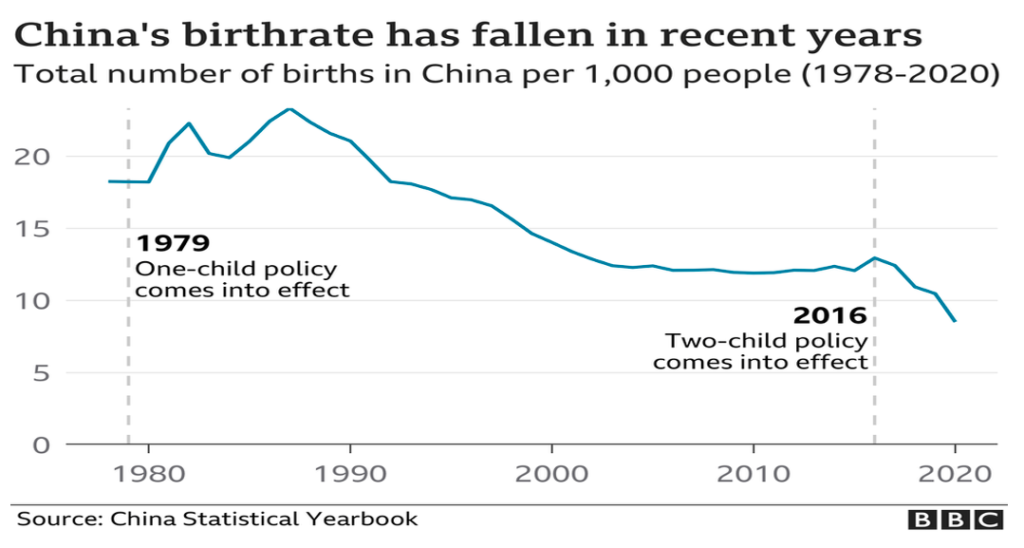
After Xi Jing Ping came to power in 2012, the Party acknowledged the problem coming from birth control. Limited reforms were introduced in 2013, allowing couples to have two children. According to instructions, such an exception worked for couples if the one was an only child. However, such an invitation to have more children failed. However, the Party acknowledged that the consequences of the previous policy did not give up. In October 2015, the CCP officially announced the end of the one-child policy. Surprisingly, the trend continued. The grim results from the population forecast and census pushed the Party to initiate the three children policy in 2021 when the Chinese Communist Party politburo met on May 31. Despite the efforts from the government, there is no significant hope that the Chinese will follow suit. According to an online survey, only one in ten respondents considers having three children.
Furthermore, a report from demographers at Renmin University suggested that the new policy hardly augments birth rates. The main reason for such hesitance appears to be the economic burden of having three children. The state should try too hard to decrease the social costs of having as many as three children (Cai, Rui, Wang, & Zhou, 2021).
According to experts, now it’s too late. The Party should have thwarted the policy 29 years ago. Furthermore, future forecasts are also dire. By 2050, a third of the population will be in their 60s, putting another pressure on the state. The shifting strategy did not cause a baby boom. In 2019, the birthrate was the lowest since Mao Zedong established communist China in 1949 (Miriam Berger; Rick Noack, 2020) (Lily Kuo; Xueying Wang, 2019).
Corruption and clientelism
Sometimes it seems that corruption came with the reforms Deng implemented in 1978. However, it always existed. As we know, Communists won the civil war defeating the Chiang Kai Shek, whose Party was deeply rooted in corruption. Two issues appeared associated with that problem. Firstly, Communists delivered the administrative apparatus from the Nationalists. Secondly, most of the party members were ex-peasants who, after victory, seized power and were seeking opportunities to reap the fruits. Even though the Party launched several anti-corruption campaigns in the 1950s, corruption remained a severe problem in the following decades. Official bonanza for officials came after Deng’s initiative to open China. Reforms brought new opportunities, which spilt over in high-stakes corruption. Many factors accounted for the corruption surge. In the 1990s, the number of smugglers augmented dramatically. They were in charge of illicit imports of automobiles, cigarettes, and automobiles. This problem was partially solved after China joined WTO in 2001 (Wedeman, 2012, გვ. 89-90; 92).
Other opportunities which are still problems today are infrastructural developments and expensive public constructions. Furthermore, the lack of a proper judicial system and subtle anti-corruption efforts were additional factors that helped spread the corruption (Wedeman, 2012, გვ. 82). For instance, apart from ecological challenges, corruption became the following story during the famous “Three Gorges” dam construction. There were numerous faulty constructions, which fell apart, further raising questions about quality and bribery. Even police arrested local officials for corruption. The report revealed that only one-third of 95 cases were related to construction. Despite the promise of the premier Zhu Rongji to control quality, few were optimistic about the overall project. Finally, 97 officials were found guilty of corruption (Gittings, 1999).
Another tool utilised by corrupted officials was their power to acquire plots of land cheaply and then resell them to the developers. Furthermore, like a carrot, they used preferential tax breaks and an extension of the credit. Sometimes their family members were involved in construction projects too. One such vivid example was Ji Jianye, or as he has been called, famously Mayor Bulldozer (Ang, 2020, გვ. 64). It should be noted that China experienced a massive increase in transnational corruption at the beginning of 2000, when bribery appeared to be the most frequent mode of elite corruption. However, low stakes bribery decreased, while in the opposite, high-stakes bribery augmented while investigating the overall trend of the 2000s. Furthermore, lucky for the state, bribery did not include corruption with theft, rather than corruption with exchanges, which has not affected the Chinese economy in the most harmful way as it would in the former (Ang, 2020, გვ. 71).
Another malign problem that arose during Mao’s era was particularistic relationships known as guanxi. It was omnipresent in 1960 when the country experienced a shortage of basic needs. Close relationships with cadres were the way to get goods and services. Furthermore, through guanxi and connections, people joined the army and colleges and secured their previous positions if they were sent to the countryside in a typical forceful work during the cultural revolution (Wedeman, 2012, გვ. 93). In the modern Chinese environment, guanxi is more related to institutional culture. Nowadays, even foreigners conceive guanxi as an indispensable rule of doing business in China. With social networks with governments or business partners, people get the job done more easily than in western societies where mutual and private interests are bounded. Business in business is also based on mutual benefits. (Chi Zhang; Seock-Jin Hong, 2017). However, things have slightly changed after Xi Jinping came to power in 2012 and unleashed his campaign.
On the one hand, some experts argue that Xi’s anti-corruption campaign targets high-level ranking profiles; therefore, it’s just another tool to eliminate political rivals and grasp more on power. For instance, Princeling Bo Xilai was taken down when he was appeared to be the main rival of Xi Jin Ping’s rise to power. He was regarded as the most western style premier that China may have. However, his career ended as fast as its rise. He also popularised Mao’s song cultivating the personality of a pragmatic and popular leader, as well known for ruthlessness inherited China’s so-called Chongqing model, including personal leadership, handling of the Party, and ideological campaigns (Keck, 2013).
On the other hand, Xi’s decision to tackle flies and tigers can be seen from another perspective, such as attacking culture that makes corruption going on track. In such wars, mass media is utterly used to publish anti-corruption campaigns to have appeared on the first pages, which alerts potential state criminals that they would be next. Furthermore, morals and discipline are the more concerned under Xi’s era. Finally, despite previous efforts, the current campaign appears to be more comprehensive and systematised. Wang Qishan, who became the so-called Czar of such a campaign, did not hesitate to charge the most potent civil and military officials. For instance, Zhou Yongkang and Ling Jihua, the former retired Politburo Standing Committee members and latter top aides of former president Hu Jintao were charged with corruption crimes. There is no excuse for PLA generals under investigation, and some of them are arrested and charged.
Such campaigns have already begotten fear. For instance, in most corrupted regions of China, Shanxi people even did not dare to visit their superiors to celebrate the Chinese new year as they would be watched and investigated by local police. Most importantly, administrative reforms were carried out, which expanded the autonomy and abilities of the anti-corruption agencies. CCDI, which represents the main anti-corruption agency, was tied by the Party to target high-profile Party members. Now, it is not the case. The expansion of the inspection offices, authorising power of enabling them to interrogate, and intercepting communications gave a new life to the agency (Keliher, Macabe; Hsinchao Wu, 2016).
Even with such vigorous efforts, corruption remains a significant problem for modern China. Even though more than 2.9 million officials were investigated since the anti-corruption campaign started, China’s corruption index increased by 6 points from 2014, reaching 42 in 2020.[5] Lacking accountability and transparency make it difficult to achieve a sweeping victory on corruption. Furthermore, it appears that officials approve fewer economic projects due to fear of being punished. It would be a daunting task for the Party to overcome such inaction by party officials. Finally, Xi is aware of the dangers of exposing the real extent of corruption. It may lead the public distrust of the Party, which Xi surely does not allow (Diallo, https://isdp.eu, 2020).
Expectations
In the final part, we argue that we should not expect much of the political crisis to force the communist government to step down. Furthermore, China will continue to engage in so-called great power competition against the United States. Finally, we should expect tensions mostly around the unification issue.
Xi Jinping prioritised the unity of the Party after he came to power. From the Communist Party, which experienced an inner crisis during Tiananmen, the CCP learned important lessons. Furthermore, Xi forced ministers and local administrators to read the history of the soviet union and especially her fall. Communist China would not allow such an outcome even now. There are many parallels from the cold war.
Moreover, Experts now argue whether it is an intelligent strategy for the U.S. to try to topple the regime down by the popular movements. It should be noted that such a scenario is far from reality. Nowadays, the CCP deals with coronavirus while the U.S. experienced more death than in the Vietnam campaign comparing with 5000s for 1.4 billion China. Furthermore, the Chinese economy depicted a positive growth after a decrease during the pandemic. Effective measures against Covid-19 and ongoing economic growth make the Party’s position unshakeable. Moreover, Xi Jinping is the most popular leader after Mao. After Xi lifted the limits on power, on the one hand, he ensured political stability, but his decision to avert limits on power may cause a looming succession crisis.
On the other hand, we should expect that antagonism between China and the U.S. will continue. There are ample issues such as climate control, terrorism, and North Korea, which can be seen from the cooperation lenses. However, as far as America is focusing more on East Asia and mainly on China, it goes without saying that geopolitical games will reach climax in the coming decades.
Finally, it is doubtful that the CCP will alter its attitude towards Taiwan. Once Mao said that they could wait and observe overall patience around the Chinese elite during decades. However, it is essential to note that for China, there is a clear red line that oversees the independence of Taiwan, leaving only one option for the CCP – returning the island by force. The cross-strait relations were extremely antagonistic during Mao’s era. However, the u-turn between the two began after Deng initiated a new path for China. The two see each other in economic terms formulating win-win cooperation. The real breakthrough occurred in 1992 consensus while the one-China principle was formally established. The CCP would not compromise any attempts by Taiwan to reverse the trend of peaceful unification. Such a stance became vivid in the 1997 crisis and mainly after 2016 when Hsui became president of ROC. The Party regards the unification of Taiwan as the top priority. Xi Jinping rarely misses the opportunity to address the Taiwan question. It was even reminded that China has another option apart from peaceful reunification. The succession law of 2005 underlines such a point. Finally, according to American analysts, it is not too far when China would successfully carry out the amphibious operation; even force would be involved in the conflict. Such predictions make the Taiwan strait even more dangerous. To wit, American power may not serve as the difference for Chinese invasion, enabling the latter to fulfil Chinese rejuvenation in 2049, celebrating with unified China. Taiwan has now become the Damokles sword of international security.
Summary
In conclusion, now the CCP enjoys its 100th anniversary. Despite the coronavirus, the official parade was held where Xi Jinping remarked the future challenges. Now the Party enters the 21st century with growing tensions and an alarming future. The report emphasised the main failures and successes of the party around the century of its foundation. Some of them have had grave consequences at present. However, as we noted, there is little to expect that the CCP will fail apart soon.
Bibliography
Ang, Y. Y. (2020). China’s Gilded Age The Paradox of Economic Boom and Vast Corruptio. Cambridge: Cambridge University Press.
Cai, J., Rui, G., Wang, A., & Zhou, L. (2021, June 3). https://www.scmp.com. Retrieved from https://www.scmp.com: https://www.scmp.com/news/china/politics/article/3135815/too-much-pressure-mixed-reaction-chinas-new-3-child-policy?fbclid=IwAR1K8PWyqC2aXqT5nGTKh12E8mu3VNBeq2AV7IjOGAuH-CBqSTShhFtu6uo
Chi Zhang; Seock-Jin Hong. (2017). Guanxi Culture. In E. Paulet, & C. Rowley, The China Business Model (pp. 19-40). Cambridge: Elsevier.
Chughtai, A. (2021, june 30). aljazeera.com. Retrieved from www.aljazeera.com: https://www.aljazeera.com/news/2021/6/30/interactive
Commission, T. L. (2009, November Tuesday). https://humanrightscommission.house.gov. Retrieved from https://humanrightscommission.house.gov: c/events/hearings/evaluation-30-years-one-child-policy-china
Daekwon, S. (2015, October 25). thediplomat.com. Retrieved from Diplomat: https://thediplomat.com/2017/10/xi-jinping-thought-vs-deng-xiaoping-theory/
Daniel, K. (1994, October). Chinese Communist Political Theory and the Rediscovery of the Peasantry. Modern China, pp. 387-415. Retrieved from JSTOR.
David, S. (1989). The Fourth and Fifth Plenary Sessions of the 13th CCP Central Committee. The China Quartely, 852-862.
Diallo, F. (2019, March). ispu.eu. Retrieved from Institute for Security and Development Policy: https://isdp.eu/publication/chinas-anti-poverty-efforts-problems-and-progress/
Diallo, F. (2020). https://isdp.eu. Retrieved from https://isdp.eu: https://isdp.eu/content/uploads/2021/04/Xi-Jinpings-Anti-corruption-Struggle-IB-09.04.21.pdf
Dikkoter, F. (2011). Mao’s Great Famine: The History of China’s Most Devastating Catastrophe, 1958-1962. New York: Bloomsbury .
Dikötter, F. (2017). The Cultural Revolution: A People’s History, 1962―1976. London: Bloomsbury Press.
Edwards, L. (2010, February 2). https://www.heritage.org/. Retrieved from https://www.heritage.org/asia/commentary/the-legacy-mao-zedong-mass-murder: https://www.heritage.org/asia/commentary/the-legacy-mao-zedong-mass-murder
Flint. (2016). Introduction to Geopolitcs. London: Routledge.
Foot, R. (2020). China, the UN, and Human Protection. Oxford: Oxford University Press.
Gilley, H. H. (2010). In Search of Legitimacy in Post-revolutionary China: Bringing Ideology and Governance Back In. Hamburg: GIGA.
Gittings, J. (1999, January Tuesday). https://www.theguardian.com. Retrieved from https://www.theguardian.com: https://www.theguardian.com/world/1999/jan/19/johngittings
Greenhalgh, S. (2012). Just One Child: Science and Policy in Deng’s China. Berkeley: University of California Press;.
Harris, N. (1969, December). The Revolutionary Role of the Peasants. Retrieved from www.marxist.org: https://www.marxists.org/history/etol/writers/harris/1969/12/peasants.htm
Hayes, A. (2021, July 7). https://www.investopedia.com. Retrieved from https://www.investopedia.com: https://www.investopedia.com/terms/o/one-child-policy.asp
Huang, P. C. (1975, January). Modern China. Mao Tse-tung and the Middle Peasants,, pp. 271-296.
Jack, G. (2021, February 28). BBC.COM. Retrieved from BBC: https://www.bbc.com/news/56213271
Keck, Z. (2013, August 21). https://thediplomat.com. Retrieved from https://thediplomat.com: https://thediplomat.com/2013/08/with-bo-xilai-on-trial-china-adopts-chongqing-model/
Keliher, Macabe; Hsinchao Wu. (2016). Keliher, Macabe, and Hsinchao Wu. “Corruption, Anticorruption, and the Transformation of Political Culture in Contemporary China.” Journal of Asian Studies 75, no. 1 (2016): 1-14. . Journal of Asian Studies, 1-14.
Kent, A. (2013). China’s participation in international organisation. In Y. Zhang, & G. Austin, Power and Responsibility in Chinese Foreign Policy (pp. 132-166). Canberra: ANU Press.
Kim, S. S. (1992). International Organisations in Chinese Foreign Policy. The Annals of the American Academy of Political and Social Science, 140-157.
Kraus, R. C. (2012). The Cultural Revolution: A Very Short Introduction. Oxford: Oxford University Press.
Kuisong, Y. (2008). Reconsidering the Campaign to Suppress Counterrevolutionaries. The China Quarterly, 102-121.
Lanteigne, M. (2007). China and International Institutions. New York: Routledge.
Lily Kuo; Xueying Wang. (2019, March 2). https://www.theguardian.com. Retrieved from https://www.theguardian.com: https://www.theguardian.com/world/2019/mar/02/china-population-control-two-child-policy?fbclid=IwAR3wxVwgNioaAZPlELMjl-OJC_9fMTjhtX0FeYP3L-zhtyt5pGcBFf9cBeY
Meisner, M. (1999). Mao’s China and After: A History of the People’s Republic. New York: Free Press.
Miriam Berger; Rick Noack. (2020, January). https://www.washingtonpost.com. Retrieved from https://www.washingtonpost.com: https://www.washingtonpost.com/world/2020/01/18/chinas-birth-rate-is-its-lowest-decades-other-countries-are-facing-same-trend/
Pavel, O., & Eloranta, J. (2014, June). Why Did the Communists Win or Lose? A Comparative Analysis of the Revolutionary Civil Wars in Russia, Finland, Spain, and China. Sociological Forum, pp. 318-341.
Redmond, J. (2020, September 1). https://macropolo.org. Retrieved from https://macropolo.org/analysis/china-shock-wto-how-regional-economies-have-fared/: https://macropolo.org/analysis/china-shock-wto-how-regional-economies-have-fared/
Sarote, M. (2021). China’s Fear of Contagion: Tiananmen Square and the Power of the European Example. International Security, 156-182.
Tan, Y. (2021, March 22). https://www.foreignaffairs.com. Retrieved from https://www.foreignaffairs.com/articles/china/2021-02-16/how-wto-changed-china: https://www.foreignaffairs.com/articles/china/2021-02-16/how-wto-changed-china
Tung Cheng-Chia; Alan H. Yang. (2020, April 9). https://thediplomat.com. Retrieved from https://thediplomat.com/2020/04/how-china-is-remaking-the-un-in-its-own-image/: https://thediplomat.com/2020/04/how-china-is-remaking-the-un-in-its-own-image/
Wang Feng, Yong Cai, Baochang Gu. (2012). Population, Policy, and Politics: How Will History Judge China’s One-Child Policy? Population and Development Review, 115-129.
Wedeman, A. (2012). Double Paradox Rapid Growth and Rising Corruption in China. London: Cornell University Press.
钱中兵. (2021, June 28). www.Xinhuanet.com. Retrieved from Xinhuanet: http://www.xinhuanet.com/2021-06/28/c_1127603399.htm
[1] Ibid.
[2] Such divide stemmed from Mao’s words in 1974 when he stated: “In my view, the United States and the Soviet Union belong to the first world. In-between Japan, Europe, and Canada belong to the second world. The third world is very populous. Except for Japan, Asia belongs to the third world. So does the whole of Africa and Latin America“. See at https://www.fmprc.gov.cn/mfa_eng/ziliao_665539/3602_665543/3604_665547/t18008.shtml
[3] Mao’s famous campaigns also included land reform, suppressing the Sufan movement and Hundred flowers campaign which also cost million of lives.
[4] Some authors argue that the lowest fertility numbers accounted for later-longer-fewer. See Stuart Gietel-Basten; Xuehui Han; Yuan Cheng. Assessing the impact of the “one-child policy” in China: A synthetic control approach 2019.
[5] See the full chart at https://tradingeconomics.com/china/corruption-index
IF YOU VALUE THE INSTITUTE OF NEW EUROPE’S WORK, BECOME ONE OF ITS DONORS!
Funds received will allow us to finance further publications.
You can contribute by making donations to INE’s bank account:
95 2530 0008 2090 1053 7214 0001
with the following payment title: „darowizna na cele statutowe”



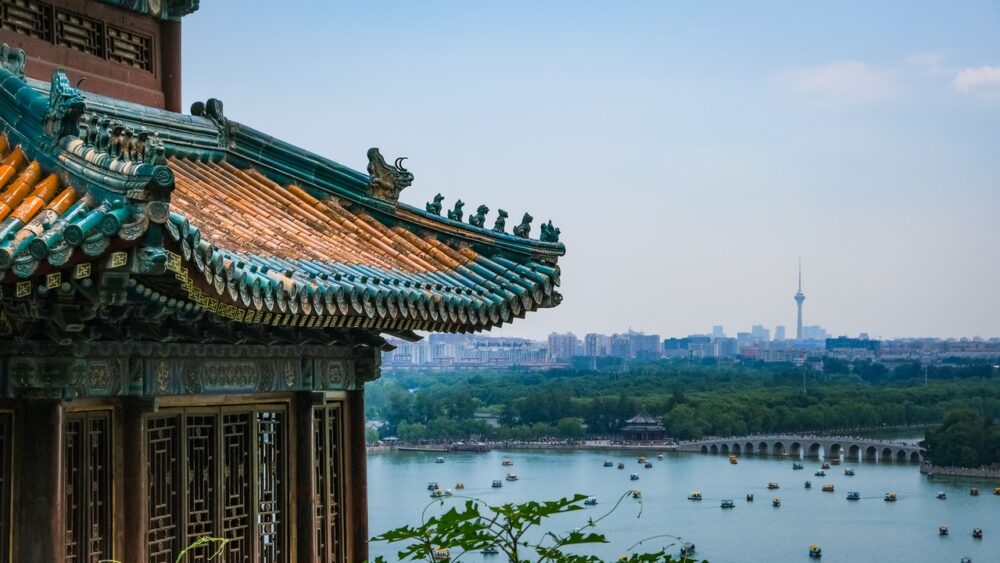

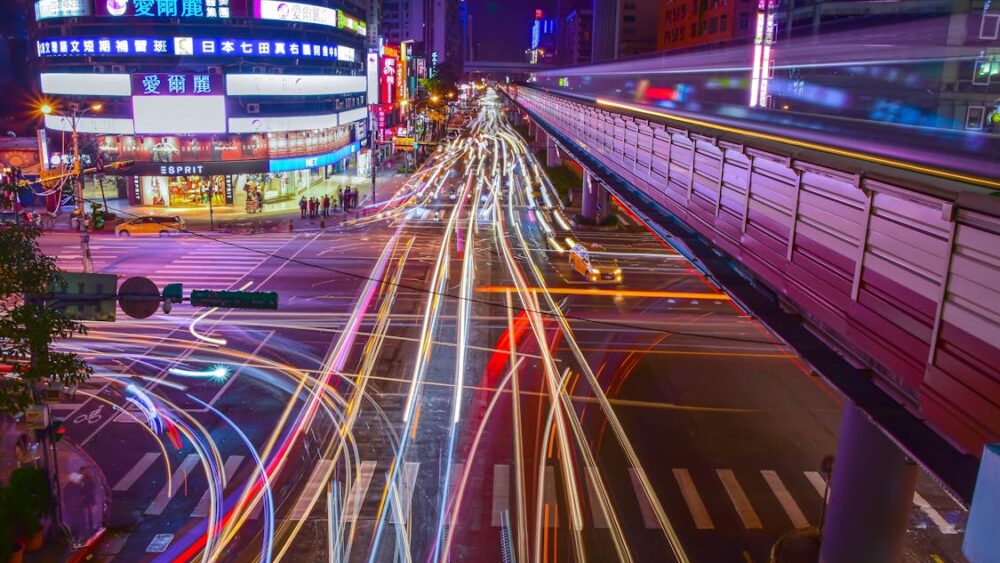









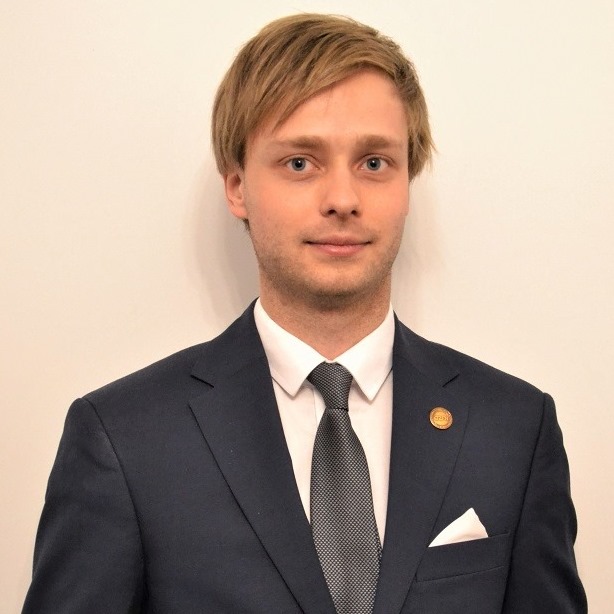
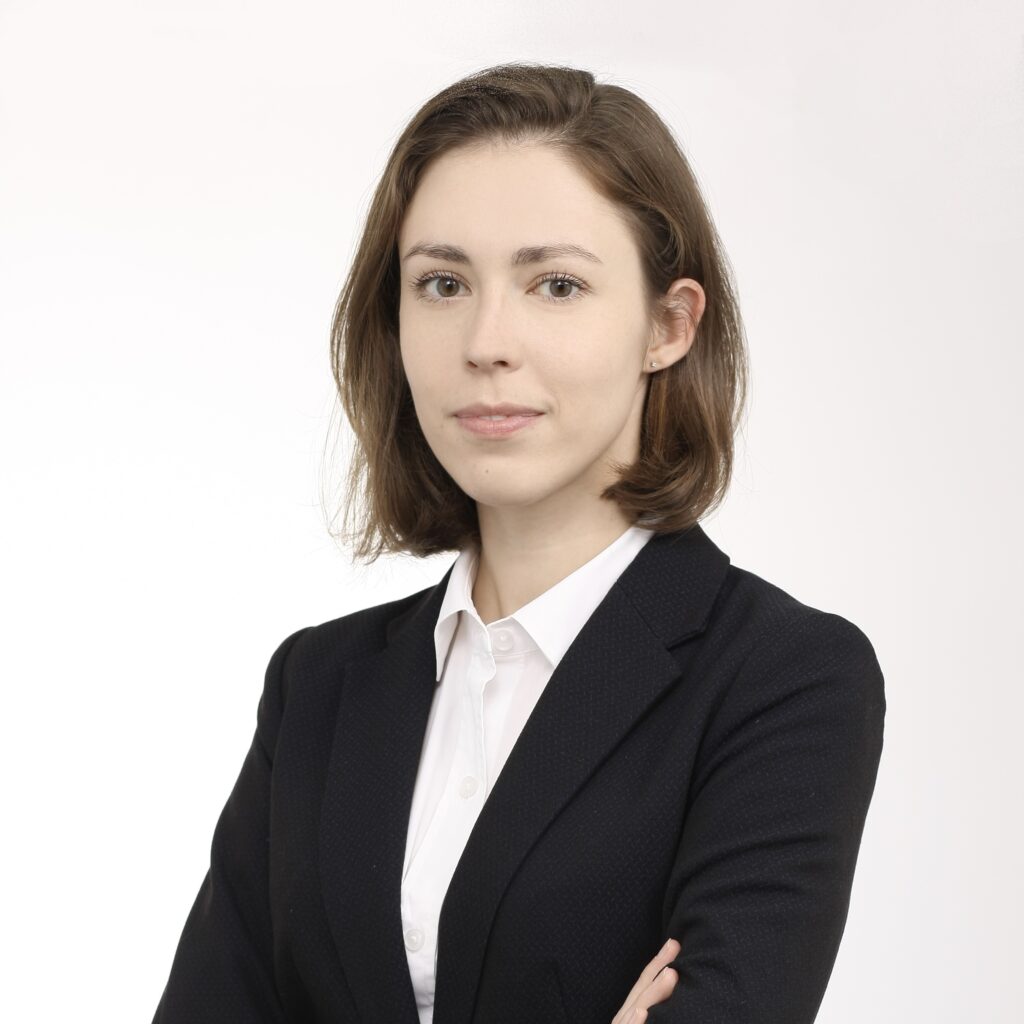
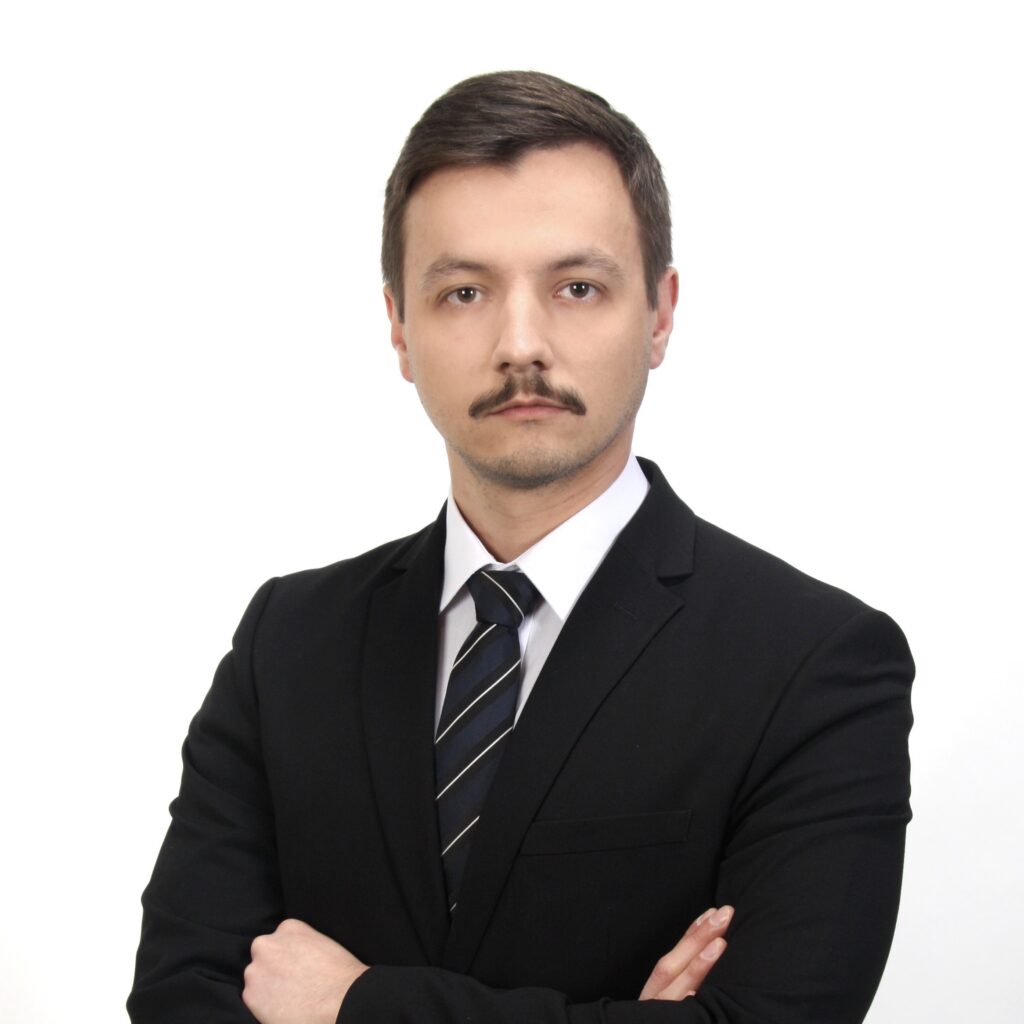

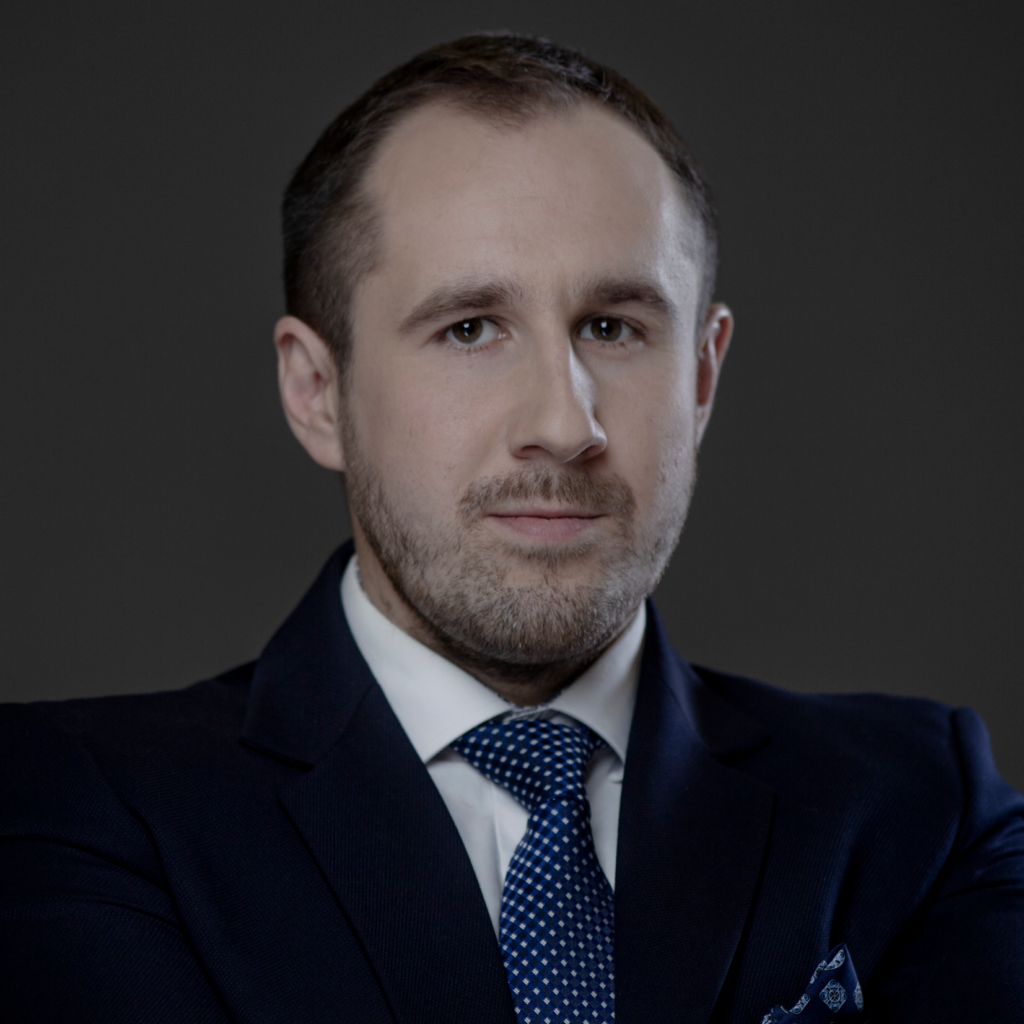






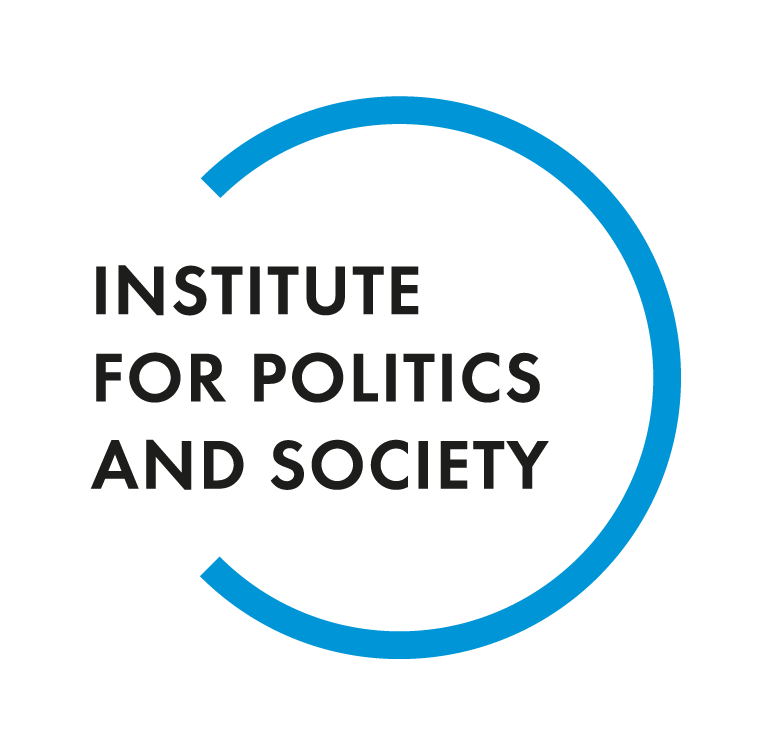


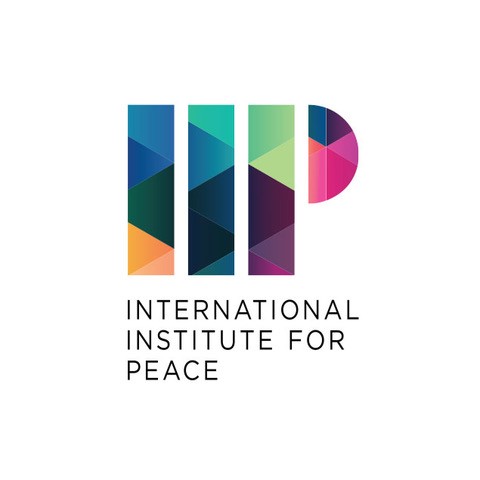
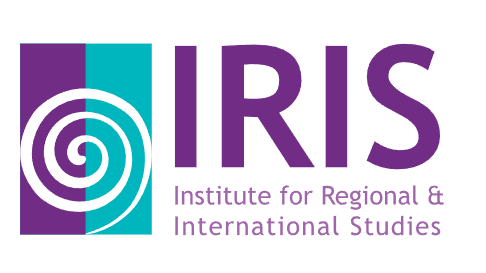
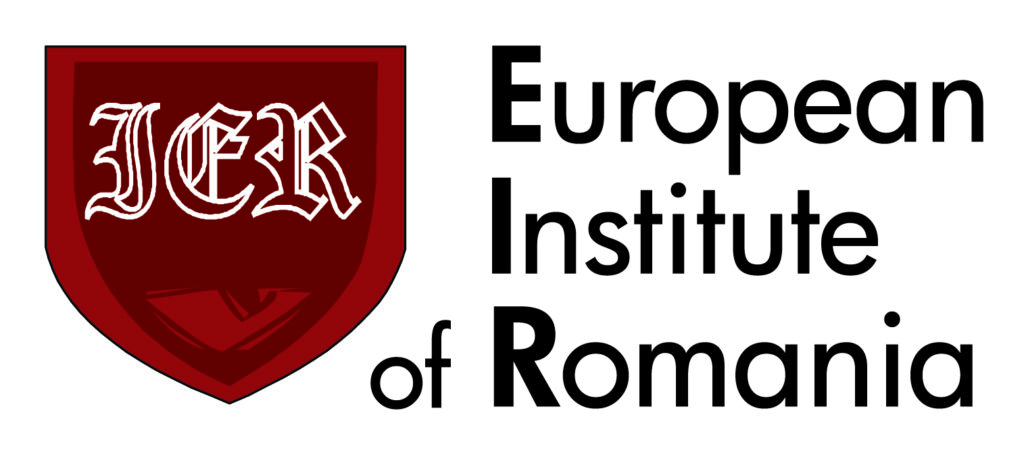
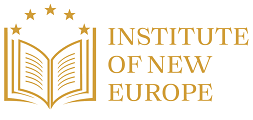
Comments are closed.